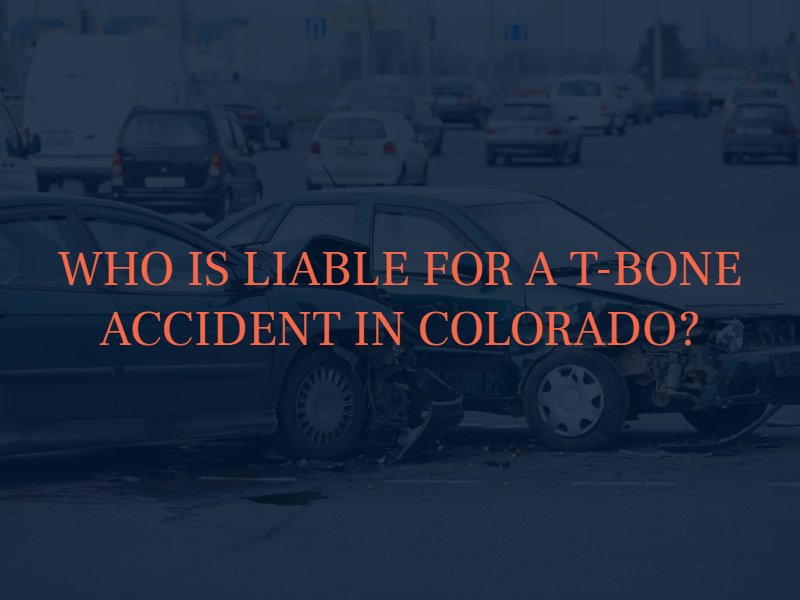If you suffer bodily injuries or property damage in an automobile accident in Colorado, you can hold the at-fault driver or party responsible (liable) for your losses. If you get injured in a T-bone accident – a type of collision that has the potential to be catastrophic for victims – a Denver car accident lawyer can carefully review the facts of your case to find out who is at fault. It is important to understand how these car accident cases work in Colorado to protect your legal rights.
What Is a T-Bone Accident?
A T-bone accident is a type of car accident in which two cars collide to form a T shape, with the front of one vehicle striking the broadside of a second vehicle. The point of impact in a T-bone accident can either be on the driver’s side or passenger’s side of the second vehicle – putting the occupant sitting there at great risk of serious bodily injury. Depending on the speed of the vehicles involved in the T-bone collision, among other factors, the crash can cause serious injuries or kill victims.
What Causes T-Bone Accidents?
The most common location for a T-bone accident in Colorado is in an intersection. This is because T-bone accidents occur most often when one or both drivers violate the right-of-way rules. Right-of-way refers to the legal privilege to proceed into an intersection based on applicable traffic laws. For example, all drivers with a red light must stop and yield to drivers with a green light. If a driver illegally enters an intersection, he or she can collide with a vehicle that is already in the intersection, causing a T-bone car accident.
Broken traffic laws are the main cause of T-bone accidents. A driver may run through an intersection, run a red or yellow light, fail to yield the right-of-way, make an unsafe left-hand turn, speed, or make other reckless decisions that cause a T-bone or broadside car accident. If you are a victim of this type of crash in Colorado, find out who is responsible based on the circumstances of your unique case with help from an attorney.
How Do Attorneys Prove Negligence in a T-Bone Car Accident?
Negligence is the foundation of most car accident claims and other personal injury lawsuits in Colorado. A driver is negligent if he or she fails to fulfill the expected duties of care, such as the obligation to obey traffic signals and remain in control of the vehicle at all times. Before you can recover financial compensation for a car accident in Colorado, you or your lawyer generally must prove negligence. This requires evidence of four key elements:
- Duty of care. An obligation to exercise reasonable care.
- Breach of duty. A violation of the driver’s duty of care.
- Causation. Proof that the breach was the actual cause of the T-bone accident.
- Damages. Compensable losses suffered because of the car accident.
Proving negligence for your T-bone car accident is easier with assistance from an attorney. An attorney can rely on expert investigators and years of experience to determine fault for your T-bone accident, such as a copy of the police report and signed eyewitness statements. Your attorney can help you find clear and convincing evidence to prove that the other driver is more likely at fault than not. This is the burden of proof – known as a preponderance of the evidence – required in a T-bone car accident claim.

Is Colorado a Comparative Fault State?
Yes. Under Colorado’s comparative fault or comparative negligence law, an injured car accident victim can still recover at least partial financial compensation after being found at fault for an accident. The plaintiff’s degree of fault must be below 51 percent, however, to still be eligible for compensation. If both drivers share fault for the accident, this can reduce the plaintiff’s financial recovery by an amount equivalent to the fault allocated to him or her.
To combat the comparative fault argument and understand who might be liable for your T-bone accident in Colorado, contact Cannon Law to request a free consultation with a car accident attorney today.